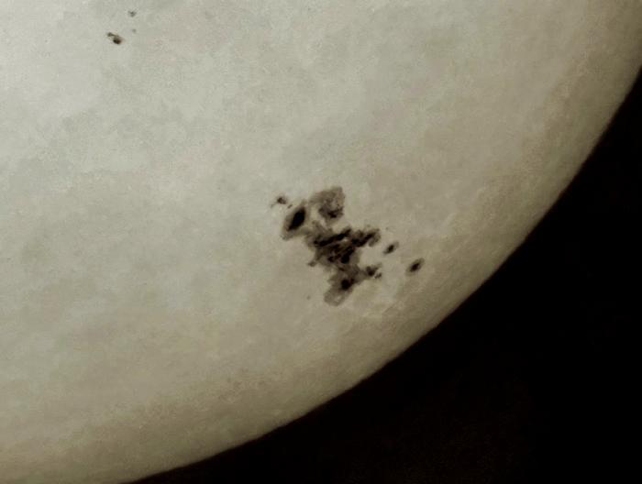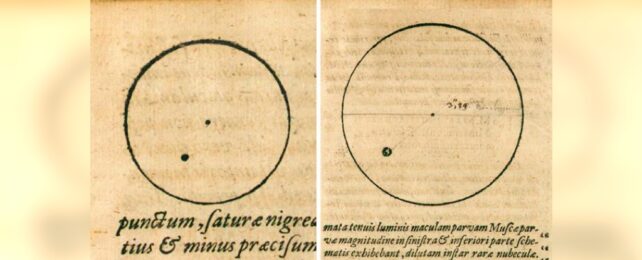Johannes Kepler is probably most well known for developing the laws of planetary motion. He was also a keen solar observer and in 1607 made some wonderful observations of our nearest star using a camera obscura.
His drawings were wonderfully precise and enabled astronomers to pinpoint where the Sun was in its 11-year cycle. Having taken into account Kepler's location and the location of sunspots, a team of researchers have identified the Sun was nearing the end of solar cycle-13.
Johannes Kepler was a German mathematician who was born in 1571. His contribution to the world of celestial mechanics and the movement of the planets is second to none.
The laws of planetary motion that he formulated from the observations of Tyco Brahe have stood the test of time. Other than his work on planetary motion, he was a renowned observer in his own right and he made one of the earliest records of solar activity before the invention of the telescope!

Kepler used a camera obscura which consisted of a small hole in a wall, through which sunlight would be allowed to pass. It would then full upon a sheet of paper allowing the observer to study an image of the Sun.
Kepler used this to record and sketch the visible features of the Sun and in May 1607 he recorded what he thought was a transit of Mercury. It turned out that it wasn't a transit of Mercury, but instead a group of sunspots.
The sunspots seen by Kepler and seen on the Sun often by modern amateur astronomers are temporary solar phenomena. They exist in the visible layer of the sun's atmosphere known as the photosphere and appear dark compared to their surroundings.
In reality, if they could be isolated from the much brighter solar disk but kept at their existing distance from Earth they would be brighter than the full Moon.
The spots are simply cooler and darker than the surrounding hot and bright material. Their temperature is around 3,800 K instead of just under 6,000 K for the average photospheric temperature.
The Sun is a great big ball of plasma and it has a magnetic field like Earth. Plasma is electrically charged gas that can drag magnetic field lines with it. As the Sun rotates it drags the magnetic field with it causing it to get wound up and tangled.
Often the stress the field lines are under are so intense that they burst through the surface, inhibiting convection, making the temperature in this region cooler, the sunspot. The sunspot (and general solar activity) peaks over an 11-year cycle.
A team of researchers led by Hisashi Hayakawa from Nagoya University have used new techniques to analyse Kepler's drawings and have uncovered new information about the solar activity at the time.
Spörer's law (which examines variation of heliographic latitudes at which solar active regions form during a solar cycle) was applied to the drawings, placing them at the end of the solar cycle before the cycle that Thomas Harriot, Galileo and other telescopic observers first captured solar cycle information.
This placed the observations just before the well documented Maunder Minimum – an unexplained period of significantly reduced sunspot activity that occurred between 1645 and 1715.
Until now, this period of minimal solar activity has been hotly debated and, whilst no definitive conclusion has been reached, the team hopes that Kepler's information may put us finally on a path to understand great periods of solar inactivity.
This article was originally published by Universe Today. Read the original article.
